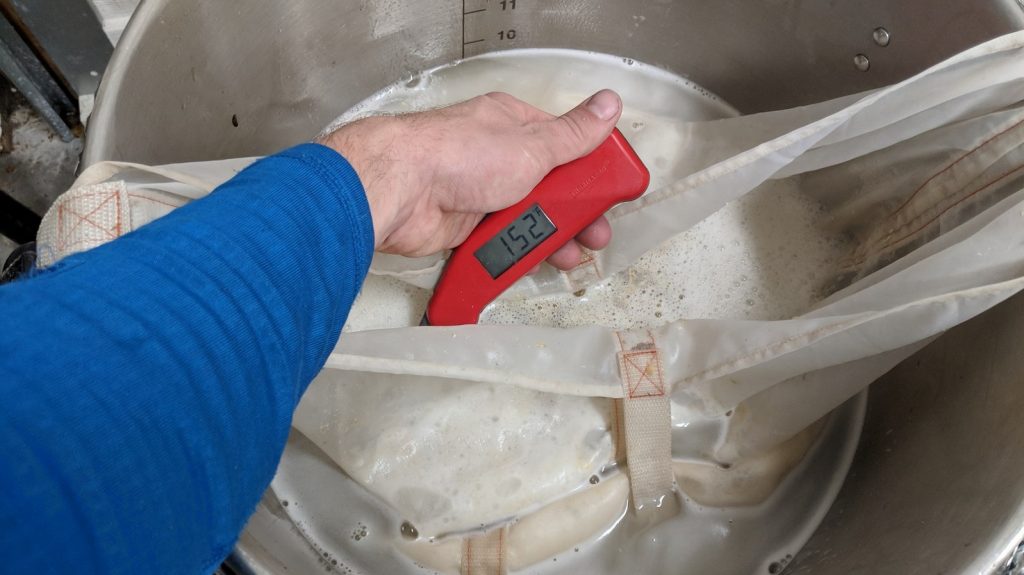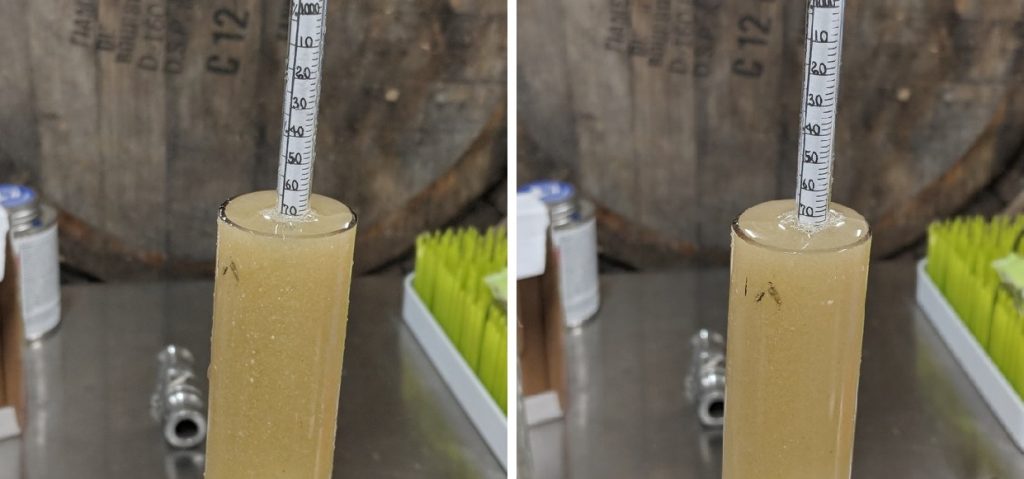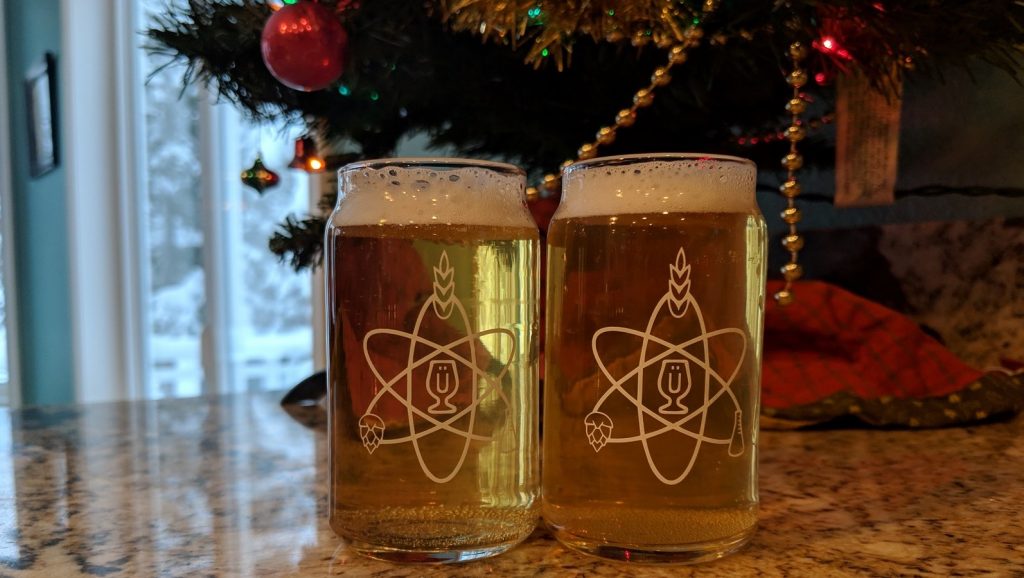Author: Brian Hall
Simple sugar has been used in the brewing process for centuries, most notably as a way to ensure high levels of both attenuation and drinkability in strong beers. This is due to the fact sugars such as sucrose (table sugar), fructose (fruit sugar), and dextrose (corn sugar) are nearly 100% fermentable, leading to higher potency with purportedly little contribution to aroma, flavor, or mouthfeel.
Belgian brewers are known for including sugar, often in the form of syrup or crystallized rocks, as a percentage of the grist when making high OG Trappist styles like Dubbel, Tripel, and Quad. Without this ingredient, these beers would presumably have the viscosity of motor oil and finish with high specific gravity, making them impossible to consume in the manner most prefer.
While various forms of simple sugar exist, ranging in color and chemical composition, the most readily available option that’s said to impart essentially no perceptible character to beer is table sugar. Typically produced from cane or beets, table sugar has become my go-to when making pale Belgian styles where it’s primary purpose is driving attenuation to both up the ABV and contribute dryness. But is it really doing what I think?
| PURPOSE |
To evaluate the differences between a Belgian Tripel made using all malt and one made with 10% sucrose.
| METHODS |
I designed a very simple Belgian Tripel recipe for this xBmt in hopes of emphasizing any impact of the variable, one receiving 10% sugar during the boil.
Caroline
Recipe Details
| Batch Size | Boil Time | IBU | SRM | Est. OG | Est. FG | ABV |
|---|---|---|---|---|---|---|
| 5.5 gal | 60 min | 32.7 IBUs | 4.1 SRM | 1.072 | 1.012 | 8.0 % |
| Actuals | 1.072 | 1.005 | 8.9 % | |||
Fermentables
| Name | Amount | % |
|---|---|---|
| Pelton Pilsner Style Malt (Mecca Grade) | 13.25 lbs | 89.83 |
| Sugar, Table (Sucrose) | 1.5 lbs | 10.17 |
Hops
| Name | Amount | Time | Use | Form | Alpha % |
|---|---|---|---|---|---|
| Tettnang | 57 g | 60 min | Boil | Pellet | 4.5 |
| Tettnang | 28 g | 15 min | Boil | Pellet | 4.5 |
Notes
| Water Profile: Ca 59 | Mg 0 | Na 0 | SO4 55 | Cl 65 |
Download
| Download this recipe's BeerXML file |
I started my brew day by collecting the RO water for two batches and adjusted them to same profile. I then weighed out the grain for both batches, the one that would be dosed with sugar being a bit lighter– each beer was designed in BeerSmith to have the same OG, one with sugar as 10% of the grainbill.
The grains were milled into separate buckets.
With the brewing water heating up, I weighed out the modest kettle hop additions for each batch.
Using a full volume BIAB approach, each batch was mashed in once strike temperature was reached, and both hit the same mash temperature.

At the end of each mash step, the grain bags were hoisted out of the kettle and allowed to drip until the same pre-boil volume was reached.

The worts were then brought to a boil, during which hops were added at the same points to both, and one received a dose of sugar.

Each wort was boiled for 60 minutes then quickly chilled before I took hydrometer measurements showing a very slight difference in OG.

After racking identical volumes of each wort to separate sanitized Brew Buckets, I made starters of Imperial Yeast B63 Monastic using leftover wort, allowing them to sit overnight before pitching.
The beers were left to fermented in a temperature stable area of my house to ferment.

I left the beers alone for 2 weeks before taking hydrometer measurements showing a stark difference in FG.

The beers were racked to separate sanitized kegs then placed in my cool keezer and burst carbonated. After a week of conditioning, they were clear, carbonated, and ready to serve to participants!

| RESULTS |
A total of 22 people of varying levels of experience participated in this xBmt. Each participant was served 1 sample of the beer made with all malt and 2 samples of the beer made with 10% table sugar in different colored opaque cups then asked to identify the unique sample. While 12 tasters (p<0.05) would have had to accurately identify the unique sample in order to reach statistical significance, only 6 (p=0.79) did, indicating participants in this xBmt were unable to reliably distinguish a Belgian Tripel made with table sugar from one that was made with all malt, despite measurable differences in ABV.
My Impressions: This beer was definitely a prime example of Belgian yeast doing its work. Similar in recipe to some Pilsners I’ve been making recently, this beer is crisp yet has all the classic characteristics one would expect of a Belgian ale. Aroma of fruity esters and yeast dominate with a light touch of spice, which carried through in the flavor. Despite thinking I detected a note of isoamyl acetate in the beer made with sugar, I was unable to consistently pick the odd beer our in multiple triangle tests.
| DISCUSSION |
The use of sugar in the brewing of Trappist ales is incredibly common, in fact the 2015 BJCP Guidelines lists the primary ingredients in Tripel as being Pilsner malt and “typically pale sugar adjuncts,” which is largely believed to contribute to the style’s counter-intuitively high ABV and drinkability. Considering the history of and widespread adherence to this approach, results showing tasters in this xBmt could not reliably tell apart a beer made with all malt from where sugar was added to the boil is quite surprising.
A regular claim when it comes to the use of lighter simple sugars in brewing is that it increases alcohol content without contributing much in the way of aroma or flavor, which might help to explain the non-significant results of this xBmt– it’s possible the beer made with 100% Pilsner malt really didn’t taste much different. However, this does little to address some of the measurable differences between the beers. The one made with sugar added to the boil not only finished 0.005 SG lower than the all malt beer, but with 8.8% ABV compared to the other’s 7.8%. How this didn’t produced a perceptible difference in mouthfeel is confounding.
Using sugar in the brewing process is a relatively cheap and easy way to increase fermentability and drive attenuation, and these results suggest it can be done without having a major impact on the perceptible characteristics of beer. For these reasons, I plan to continue using sugar when making traditional Belgian styles, and will also consider it as an adjunct to other styles I’m looking to dry out inconspicuously.
If you have any thoughts about this xBmt, please do not hesitate to share in the comments section below!
Support Brülosophy In Style!
All designs are available in various colors and sizes on Amazon!
Follow Brülosophy on:
FACEBOOK | TWITTER | INSTAGRAM
If you enjoy this stuff and feel compelled to support Brulosophy.com, please check out the Support page for details on how you can very easily do so. Thanks!















13 thoughts on “exBEERiment | Impact Adding Table Sugar To Wort During The Boil Has On A Belgian Tripel”
Try a higher percentage of sugar. Jamil Zainashef’s recipe in brewing classic styles is 15% and Gordon Strong’s Allison is 20%, according to online databases. The AHA recipe data base shows a few around 10% but also several higher. There is going to be a threshold at which most consumers detect a difference. I’m a little surprised by these results, as I would have thought about 10% would have done it.
I’m not surprised by this result great en many similar different FG beers being indistinguishable in Brülosophy experiments. Is ask the brewers of these beers if they experience a different feeling of fullness or other symptoms indicating enhanced digestibility of the lower FG beer when consumed in real world volumes…say 24oz. consumed over course of an hour.
I would be interested in the preference data on this one.
Main reason was not drinkability but probably tax evasion.
Belgium used to tax malts for making beer. Sugar and un malted grains where not taxed.
That explains the use of unmalted wheat and sugar.
Later mash tuns where taxed, so sugar was still helping to make a higher abv without paying taxes.
A lot of the beer innovations in Belgium are there thanks to tax evasion
Here in Australia it’s technically illegal for a home brewer to use more than 4% of the grist as a non cereal grain derived adjunct.
Under our excise laws this isn’t even considered beer .
Lucky I don’t brew Belgians 😅
@sven — would the be “tax evasion” or “tax avoidance”?
Merry Christmas and best wishes hope always to give us your knowledge with your free open mind
Thank you
Cheers
Pando
Great timing on this xbmt! I just brewed up a 10% Belgian tripel last night w 13% beet sugar addition. Gonna age it in a bourbon barrel for 4-6 months yeehaa!!!
How does the presence of sugar drive the FG down to 1.005? Doesn’t that mean sugar is making the yeast eat more of the malt sugars as well? That has never made sense to me. Maybe I’m missing something.
The two beers had a similar original gravity, the simple sugar replaced some of the malt. The sugar fermented out completely, the malt did not.
I would like to know what serving temperature these beers were served at? wouldn’t noticeable differences be covered up the cooler the serving temp?
Any difference in head retention?
I would love to see if there is a difference between different types of sugars. For example, I’ve heard and read that adding table sugar can give the beer taste of green apples, but corn sugar (dextrose) doesn’t. This would be a very simple but exciting exbeeriment!
Thanks for all the interesting info on this site, you have encouraged me to brew my first kellerbier in 17°C!